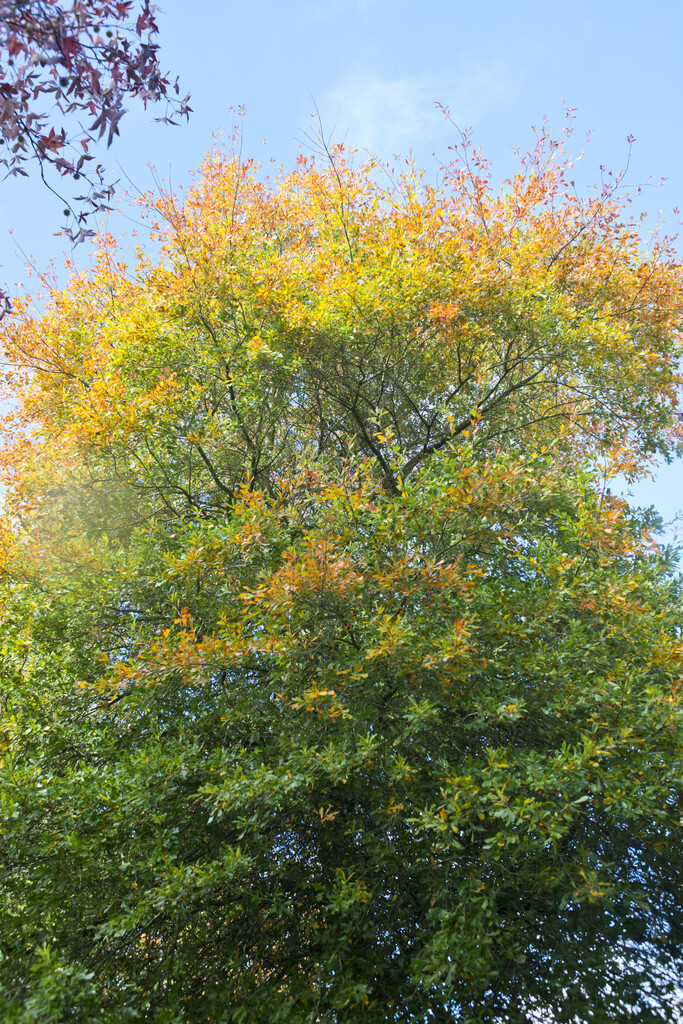Quercus laurifolia
laurel oak
A semi-evergreen to deciduous, spreading tree with a rounded crown and fissured bark. Glossy, oblong to ovate leaves up to 10cm long are entire or sometimes shallowly three-lobed and may be bronze-tinged when young. Leaves may be retained throughout the winter in milder climates. Acorns are rounded and borne in shallow cups
Size
Ultimate height
Higher than 12 metresTime to ultimate height
20–50 yearsUltimate spread
Wider than 8 metresGrowing conditions
Moisture
Moist but well–drainedpH
Acid, NeutralColour & scent
| Stem | Flower | Foliage | Fruit | |
| Spring | Green Yellow | Green Bronze | ||
|---|---|---|---|---|
| Summer | Green | |||
| Autumn | Green | Brown | ||
| Winter | Green |
Position
- Full sun
Aspect
East–facing or South–facing or West–facing
Exposure
Exposed or Sheltered Hardiness
H6Botanical details
- Family
- Fagaceae
- Native to GB / Ireland
- No
- Foliage
- Semi evergreen
- Habit
- Spreading branched
- Potentially harmful
- Pets (dogs): Harmful if eaten - for further information and contact numbers regarding pets, see the HTA guide to potentially harmful plants
- Genus
Quercus can be deciduous or evergreen trees or shrubs, with entire, lobed or toothed leaves; flowers inconspicuous, followed by characteristic acorns; sometimes good autumn colour
- Name status
Correct
- Plant range
- SE USA
How to grow
Cultivation
Grow in fertile, deep, well-drained, lime-free soil in full sun. See tree cultivation for further advice
Propagation
Propagate by sowing seed soon after it drops or by semi-ripe cuttings in late summer
Suggested planting locations and garden types
- Architectural
- Coastal
- Low Maintenance
Pruning
Pests
May be susceptible to oak processionary moth, aphids, caterpillars, leaf-mining moths and oak gall wasps
Diseases
May be susceptible to powdery mildews and honey fungus
Get involved
The Royal Horticultural Society is the UK’s leading gardening charity. We aim to enrich everyone’s life through plants, and make the UK a greener and more beautiful place.
